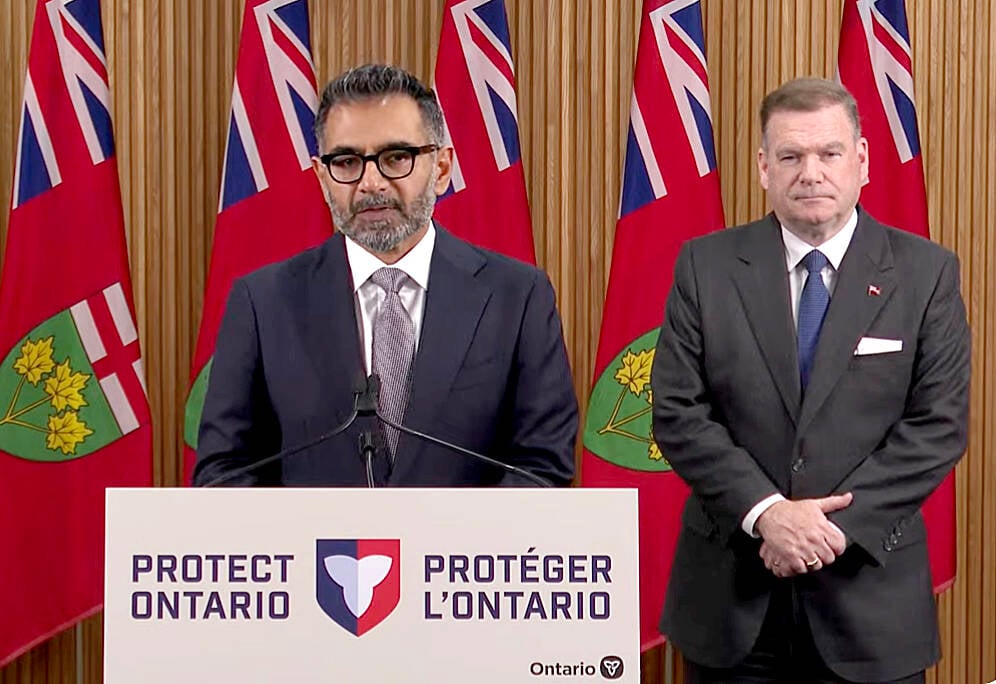From a young age, children are taught that words matter.
They are repeatedly told that they should “use their words” and that the best stories are ones told in a language their audience (meaning their parents, teachers, siblings, classmates) can understand.
These same communication rules apply to the agriculture industry.
For years, the sector has been grappling with a widening rural-urban gap. More and more Canadians are growing up far away from the farm, as Canada’s population continues to become more urban-centric.
Read Also

Conservation Authorities to be amalgamated
Ontario’s plan to amalgamate Conservation Authorities into large regional jurisdictions raises concerns that political influences will replace science-based decision-making, impacting flood management and community support.
Despite the information gulf, consumers continue to demand more information about where their food comes from.
But that agriculture knowledge gap is not limited to the consumer level. It’s also found at the policy level.
Fewer and fewer Canadian politicians elected in this country have a farm background. Currently there is only one member in the Canadian Senate who has direct ties to the agriculture industry.
This knowledge gap comes at a time when the agriculture industry has been touted as a future economic driver with untapped potential. It’s also featured in federal budgets and of course at the agri-food economic strategy table.
But while the sector has been highlighted for its potential, Canadian farmers are also finding themselves caught in the middle of ongoing trade disputes. Food is a perishable commodity, a reality that often makes farm products one of the first goods targeted when countries disagree.
Canada and China are currently feuding over canola exports after Beijing pulled the canola export permits from two major Canadian grain companies and Chinese importers stopped buying canola seed.
The situation has dominated conversations at coffee row, farm shows and amongst the agriculture industry since the dispute began.
The interest is understandable. The dispute comes just weeks before spring seeding, when there is lots of canola still sitting in bins on Canadian farms and farmers’ planting plans are pretty much locked-in.
The dispute has also caught the attention of non-farming Canadians, including the mainstream media.
Canadians –– and politicians –– want to know what a dispute like this means for farmers.
They want to understand the kinds of conversations that are taking place at farmhouse kitchen tables.
They want to know why people are scared.
What they might not know are things like “cash-flow,” “business risk management,” “crop rotation,” or “non-tariff trade barriers”.
For farmers, those words are commonplace, terms that are used in daily conversation.
As a result, the first instinct might be “well, people –– especially politicians –– should just learn ‘em. I can’t believe they don’t know what x means or y means,” followed by a series of tweets about how agriculture is undervalued, underappreciated and that X individual should stick to talking about something else.
Rarely, if ever, have insults or frustration won a school-yard dispute. That same lesson applies to conversations about complex matters, like agriculture.
Farming is personal. For years, farmers have been encouraged by the industry to be storytellers as a way to bridge the gap between the farm and people’s plates.
But a storyteller cannot connect with his audience if they do not understand the language he or she is using.
For farmers, that means translating the everyday language of farming into a dialect urban Canadians will understand. For example:
- Tight cashflow = not being able to pay the bills because the family’s income has been disrupted.
- Crop rotation = planting a different crop so that the soil and fields stay healthy.
- Business risk management = roughly speaking, think of it as agriculture-specific insurance programs that farmers can tap into when things don’t quite go according to plan.
Translating agriculture’s lingo into layman’s terms isn’t always an easy task. Doing so might take some extra words, a bit of patience and some creative thinking, while admiring the sector’s complexity.
Still, the end result is likely worth it.













